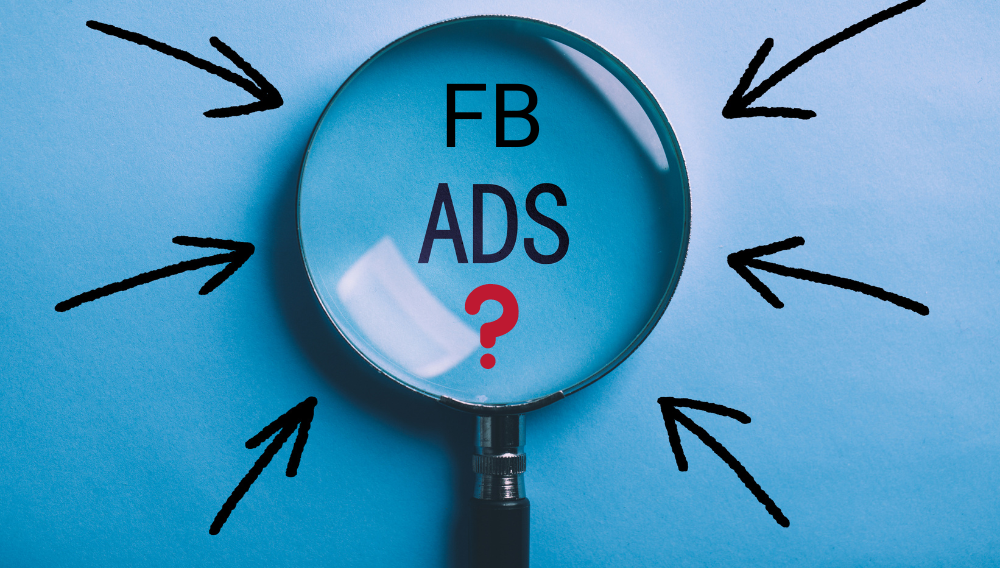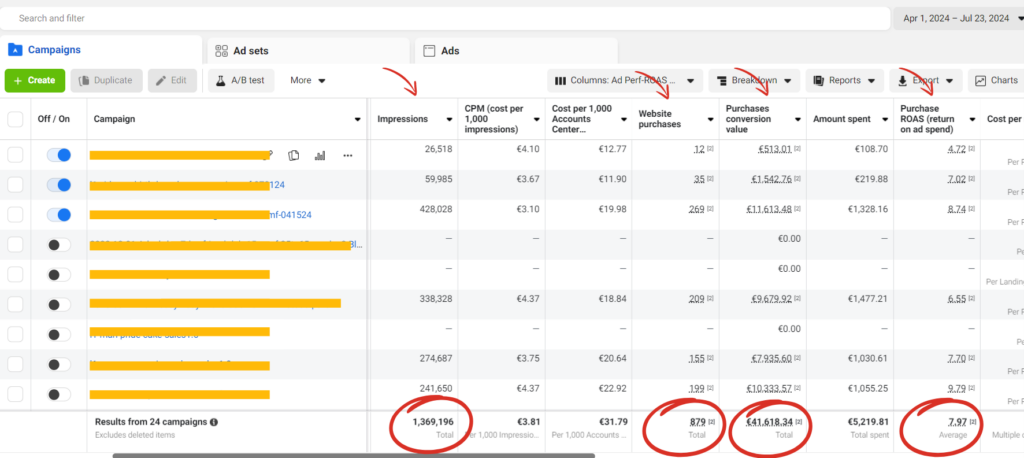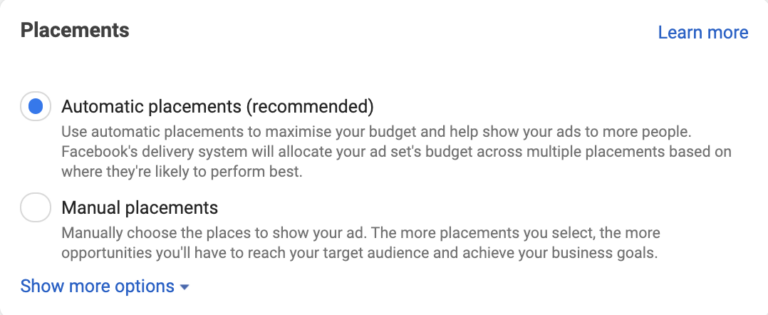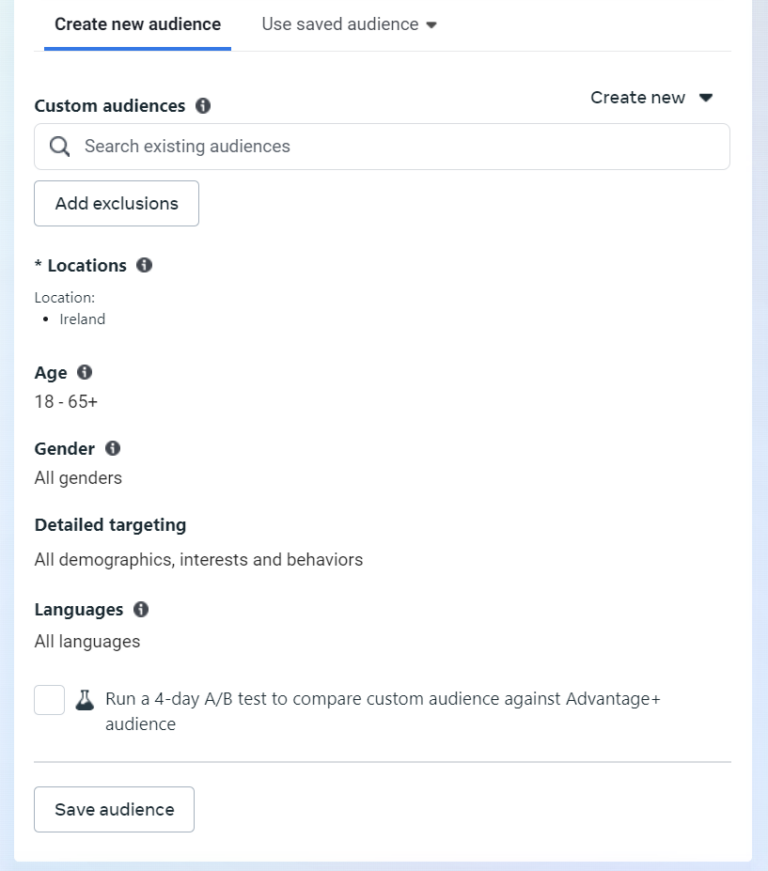
Are Facebook Ads Worth It?
Advantages & Disadvantages of Facebook Advertising
With all the negative press and several of your friends deactivating their accounts, it might seem like Facebook’s popularity is waning.
However, the platform is still going strong. Advertising on Facebook remains as effective as ever.
To illustrate this, here are the recent results achieved for one of our clients:

With ROAS like that, it’s safe to say that Facebook advertising is FAR from dead.
As a Facebook Advertising Agency, we’ve spent over €2 million per year on Facebook ads and have seen similar success stories across the board.
So if you want to use Facebook to reach a wider audience, generate new leads and convert more customers – Facebook ads are 100% worth it. In fact, Some companies need to invest in highly organised campaigns with well-produced creatives to stand out from their competition.
In this blog, we’ll show you the advantages and disadvantages of Facebook ads to paint a clearer picture of the state of Facebook advertising in 2024.
The benefits of Facebook Ads
It’ll save you time
It might seem like creating a strategy is time-consuming, but in reality, it saves you time in the long run. With a plan in place, you won’t waste time figuring out what to post at the last minute.
It supports your business goals
Your content should support your overall marketing strategy. By understanding your target audience, you can turn social media into a revenue-generating tool.
It’ll help you measure results
A content strategy helps you define and track the metrics that matter. You’ll know what works and what doesn’t, allowing you to adjust your approach for better results.
With a social media content strategy, you’ll define your most important metrics—those that indicate whether your strategy is paying off. It also gives eCommerce marketers a way to prove which formats and topics are most successful (so they can create more of it).
1. Set goals for your new strategy
With 3.065 billion monthly active users worlwide and with 4.06 million users in Ireland, Facebook still holds its most significant advantage: Scale.
It’s the world’s third most visited website, only beaten by Google and Youtube. If somebody is online, the chances are, they’ll visit Facebook. If they don’t, they’ll probably visit Instagram, owned by, you guessed it, Facebook.
The reach Facebook gives advertisers are still unparalleled, and it’ll likely stay this way for a long time.
To reach this massive audience, advertisers use placements. Placements are where your ads will show, and Facebook has A LOT of them on offer.
Here are all of the ad placements Facebook offers:
Feeds
These ads appear as people scroll through their Facebook or Instagram feeds and inboxes on both mobile and desktop.
Stories Ads
Ads appear as full-screen vertical ads in between people’s stories.
In-Stream ads
These appear while users consume video content on Facebook and Instagram.
Search ads
These ads are shown alongside search results on Facebook and Marketplace.
Message ads
These show as sponsored messages via Messenger
In-article ads
These appear in Instant Articles within Facebook’s mobile app.
Apps ads
These ads appear as native or video ads across apps on the Audience Network.
The list is pretty exhausting, with countless variations within each type of ad. It’s why we recommend using Automatic Placements. This displays your ads across all placements simultaneously for the same cost, optimising your budget.

Save yourself a lot of hassle with Automatic placements.
1. Targeting options
One of Facebook’s most powerful features is its detailed targeting capabilities. This targeting enables you to efficiently allocate your ad budget by segmenting your audience based on factors such as demographics like age or location, the ads they’ve clicked on, pages they engage with, and even the mobile devices they use.
By leveraging this data, you can precisely identify who should see your ads. Equally important, you can determine who shouldn’t see them. Targeting the right audience leads to higher conversions and more qualified leads.
With advanced targeting, you can tailor your ads to customers at various stages of the marketing funnel. For instance, you can promote a whitepaper or blog post to those likely at the top of the funnel. As they move further down, you can successfully advertise offers and products directly, resulting in increased success.
2. Custom Audiences
Custom Audiences allow you to target people on Facebook who are already familiar with your business. To create a Custom Audience, simply upload your first-party data, such as an email marketing list or a selection of previous customers.
You can build your Custom Audience using the following sources:

Using your data, you can target specific segments within your existing audience. For example, you can focus on customers who have made a single purchase but haven’t returned, or target customers with a high average order value with offers tailored to their preferences.
Additionally, Custom Audiences allow you to grow your reach by building Lookalike Audiences, expanding your customer base with new prospects similar to your best customers.
3. Lookalike audiences
Lookalike Audiences is a tool designed to find new potential customers who closely resemble your existing ones. By leveraging insights from your current audience, Facebook targets new users who are highly likely to become customers.
After creating a Custom Audience, you can generate a Lookalike Audience from it. For our Facebook ad campaigns, we begin by targeting the top 1-3% of lookalikes. As these campaigns grow, we increase the Lookalikes to 10%. This approach maximises the audience pool size and utilises Facebook’s machine learning to pinpoint the right audience segments within that pool.
4. Robust Analytics
As the famed management consultant Peter Drucker said, “If you can’t measure it, you can’t improve it.”
Given the numerous variables involved in a campaign, analysing what’s working and what isn’t is crucial. Facebook provides a comprehensive overview of your campaign’s performance metrics in Ads Manager to assist with this. The insights gained from this detailed analysis are invaluable for an effective Facebook marketing campaign.
These metrics include post engagement, conversion rates, sales, and much more. By leveraging this analysis, you can refine your ads and focus on what works, ultimately boosting your return on ad spend.
5. Reach more people with paid
In recent years, organic reach has become less effective due to changes in Facebook’s algorithms.
Facebook operates on a pay-to-win model. To ensure potential customers learn about your business and engage with your content, you must use ads. By targeting the right audience and creating content they want to see, you can stand out from your competitors and extract significant value from your ad spend.
Paid ads enable your content to reach far more people than organic methods ever could. They also allow you to easily scale your marketing efforts.
The drawbacks of Facebook Ads
Before diving into the specifics, it’s important to recognize that no advertising platform is without its challenges, and Facebook Ads is no different. While it’s widely popular and offers extensive reach, there are several drawbacks that can impact your return on investment and the overall effectiveness of your campaigns.
In this section, we’ll explore the top ten cons and disadvantages of using Facebook Ads, giving you a clear understanding of the potential hurdles you may encounter.
1. Cost Increases
One of the most significant challenges advertisers face on Facebook is the increasing cost of ads. This trend is primarily driven by the platform’s growing popularity and the competition for ad space. As more businesses flock to Facebook, the demand for advertising increases, leading to higher costs.
Real-Life Example:
Consider a small online retailer specializing in handmade crafts. Initially, their Facebook ad campaigns were affordable and effective. However, as more competitors entered the market and the demand for ad space increased, they noticed a significant rise in their cost-per-click, reducing their return on investment.
Resolution:
To mitigate this, advertisers can enhance ad quality and relevance, aim for higher ad relevance scores, target niche audiences, explore less competitive ad times, and diversify advertising platforms to reduce costs on Facebook.
2. Complexity
Managing Facebook Ads can be daunting, especially for beginners. The interface is complex, with many options and settings. Tracking campaign aspects like targeting and budgeting requires time and expertise.
Real-Life Example:
A local restaurant used Facebook Ads to promote a new menu but struggled with the platform's complexity. They found it challenging to select the right target audience and ad format, resulting in low engagement and high costs due to a lack of optimization.
Resolution:
To overcome this, businesses can train their marketing teams or hire a Facebook advertising specialist. Utilizing Facebook's resources, like Blueprint courses, can also help manage campaigns effectively.
3. Over-saturation
The vast number of advertisers on Facebook creates a saturated market. Users are constantly bombarded with ads, leading to ad fatigue. This makes it harder for individual ads to stand out and capture attention.
Real-Life Example:
A fashion brand noticed a decline in ad performance over time. Despite creative content, their ads were lost in the sea of advertisements on users’ feeds, resulting in lower engagement and conversion rates.
Resolution:
Brands can counteract market saturation by creating highly engaging, unique content that resonates with their audience. Focusing on storytelling, video content, and personalized ads can increase effectiveness. Testing different ad formats and creative strategies can also help stand out.
What is the success rate of Facebook Ads?
93% of our eCommerce clients see a higher return on ad spend with HOT IRON Digital. Our success stems from our focus on eCommerce and small businessess, providing expert media buying and standout creatives. With our in-house production studio and deep expertise, we drive increased traffic, video views, engagement, and brand awareness for brands and local businesses.
Creating a social media content strategy can be challenging, but with this guide, you’re well on your way. And if you need a hand, HOT IRON Digital is here to help.
We’ve helped numerous clients boost their social media engagement and achieve their business goals. Ready to see the same results? Get in touch with us today!
